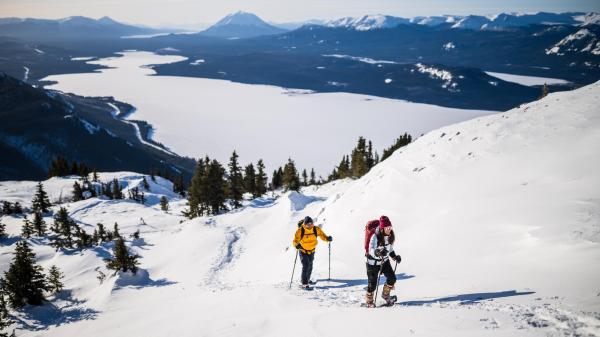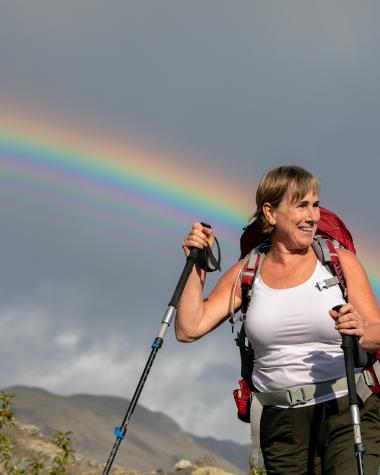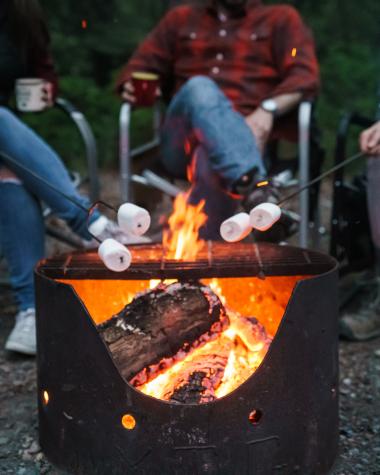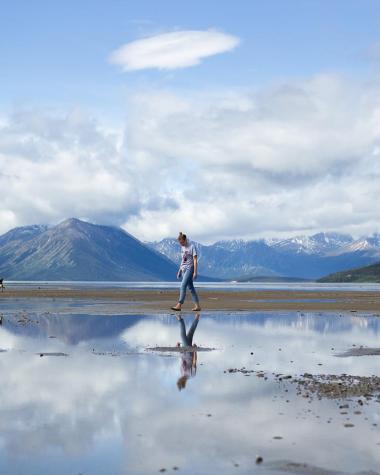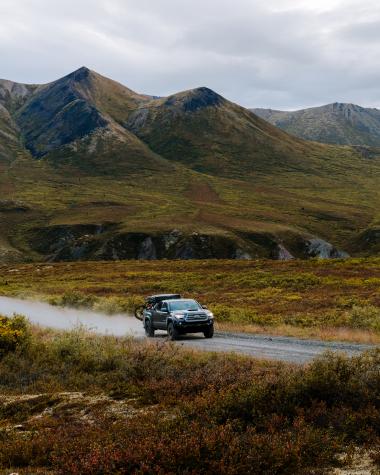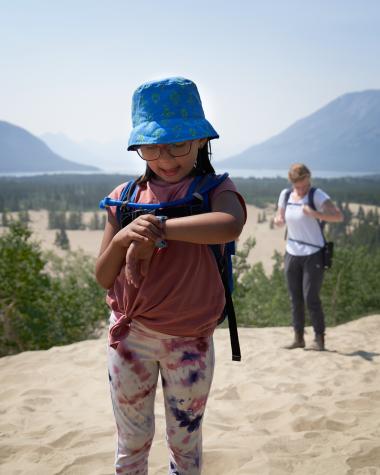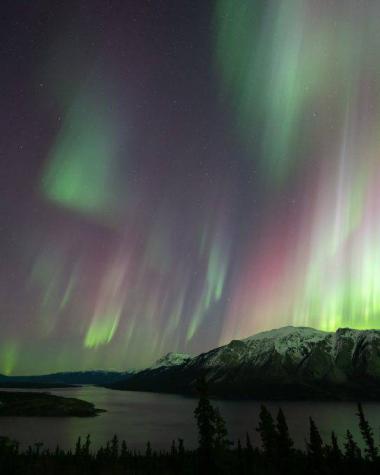
Travel tips Winter camping tips
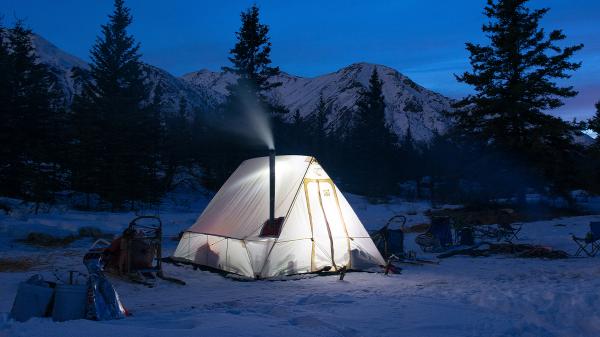
Camping. It’s not just for summer anymore.
Why camp in the winter? For one thing, there will definitely be fewer crowds and bugs. It’s just you, the hushed snow-covered landscape, and whatever wildlife ventures out. Plus there are tons of activities to try. Snowshoeing, skiing, ice fishing and fat biking, to name a few. Winter camping can give you a whole new perspective on winter, and the world for that matter. Especially if you are lucky enough to have the northern lights shine above you.
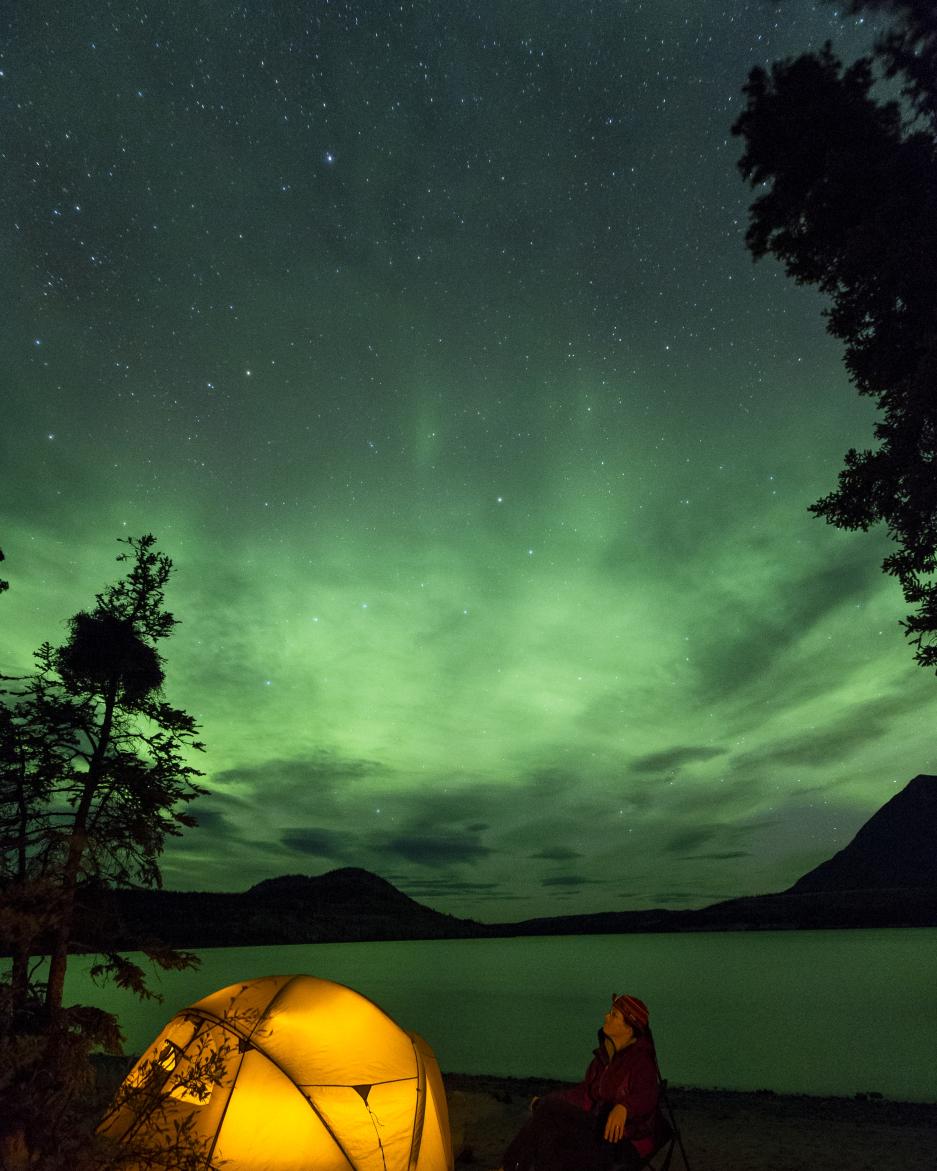
So, what do you need?
Like any camping trip in the Yukon – a place known for temperatures dropping well under the freezing point – always be prepared. Bring warmer clothing and extra dry layers. Nothing’s worse than frozen socks on a cold winter day. Use the right gear.
- Tent: Rated for extreme cold weather, waterproof
- Sleeping pad: R-value of at least 4 for warmth and protection from the frozen ground
- Sleeping bag: Rated to at least the temperature of the expected lows, pack extra layers for warmth and consider a liner to add a few degrees of protection
- Base layers: Merino wool or synthetic thermals that hug your body
- Mid layers: A puffy jacket will always be your friend
- Outer layers: Ensure they are waterproof and offer enough room for your base and mid-layers
- Extras: Wool socks (a few pairs), waterproof boots, cozy hat (or two!), neck gaiter or balaclava, waterproof and insulated gloves or mittens
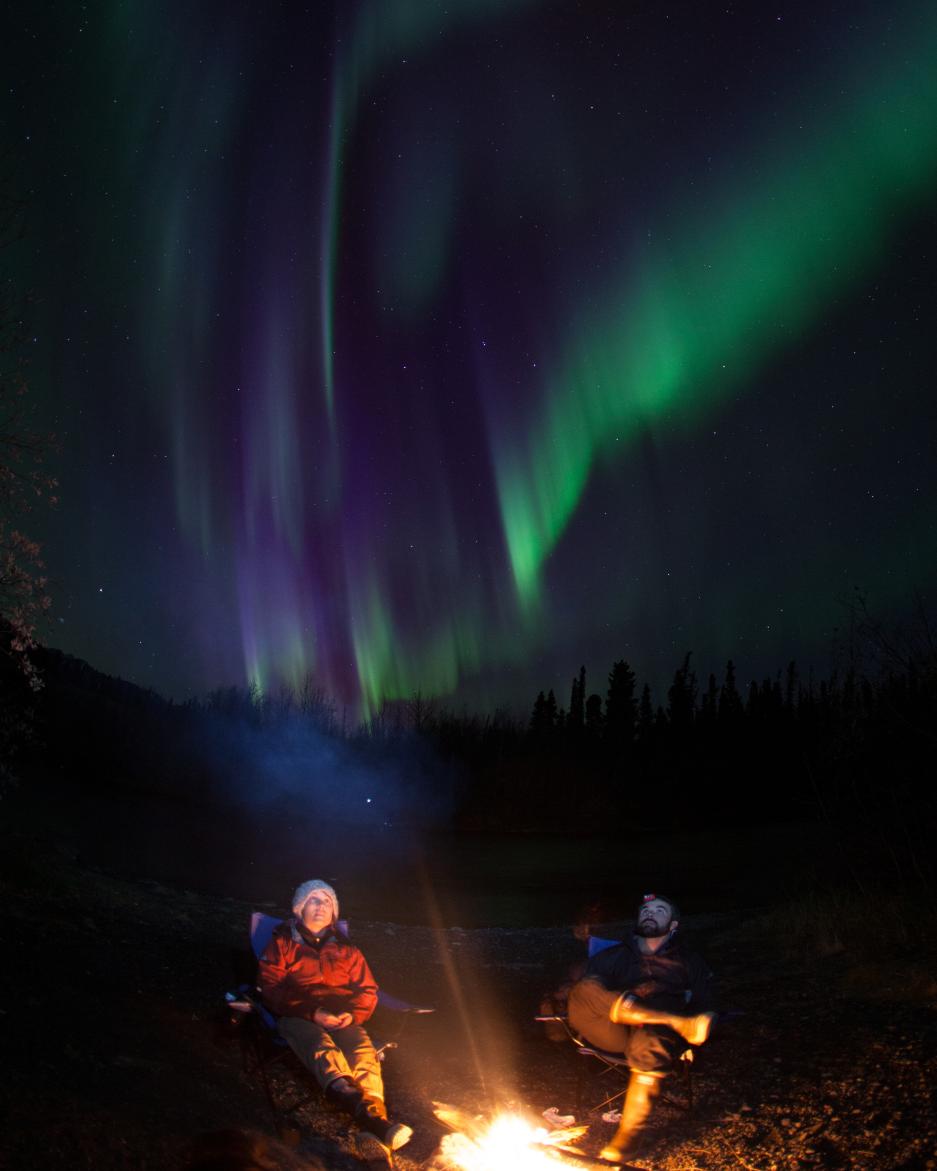
Where to set up
Before you go anywhere, check to see where you’re allowed. Then, set up your tent in a sheltered area, away from avalanche risk. Contact Parks Canada or Yukon Parks for more information. No matter where you choose to camp, be sure to let someone know your plans before you head out.
- The wind can make even the coldest temperatures feel unbearable. Look for a spot that is sheltered by trees while being out of a potential avalanche zone.
- Ensure you have access to firewood, or bring a camping stove that can withstand cold temperatures.
- Be mindful of wildlife and ensure you keep your bear spray warm enough to use if needed.
- Popular locations include Kluane National Park and Reserve and Tombstone Territorial Park, which are both great for skiing, snowboarding, snowmobiling and snowshoeing.

A little help here
If you don’t have proper gear, there are tours that can hook you up with everything you need.
Perhaps try watching a winter wonderland glide by while on your guided snowmobile excursion. Fully winterized camper vans are also available to rent. Nice!
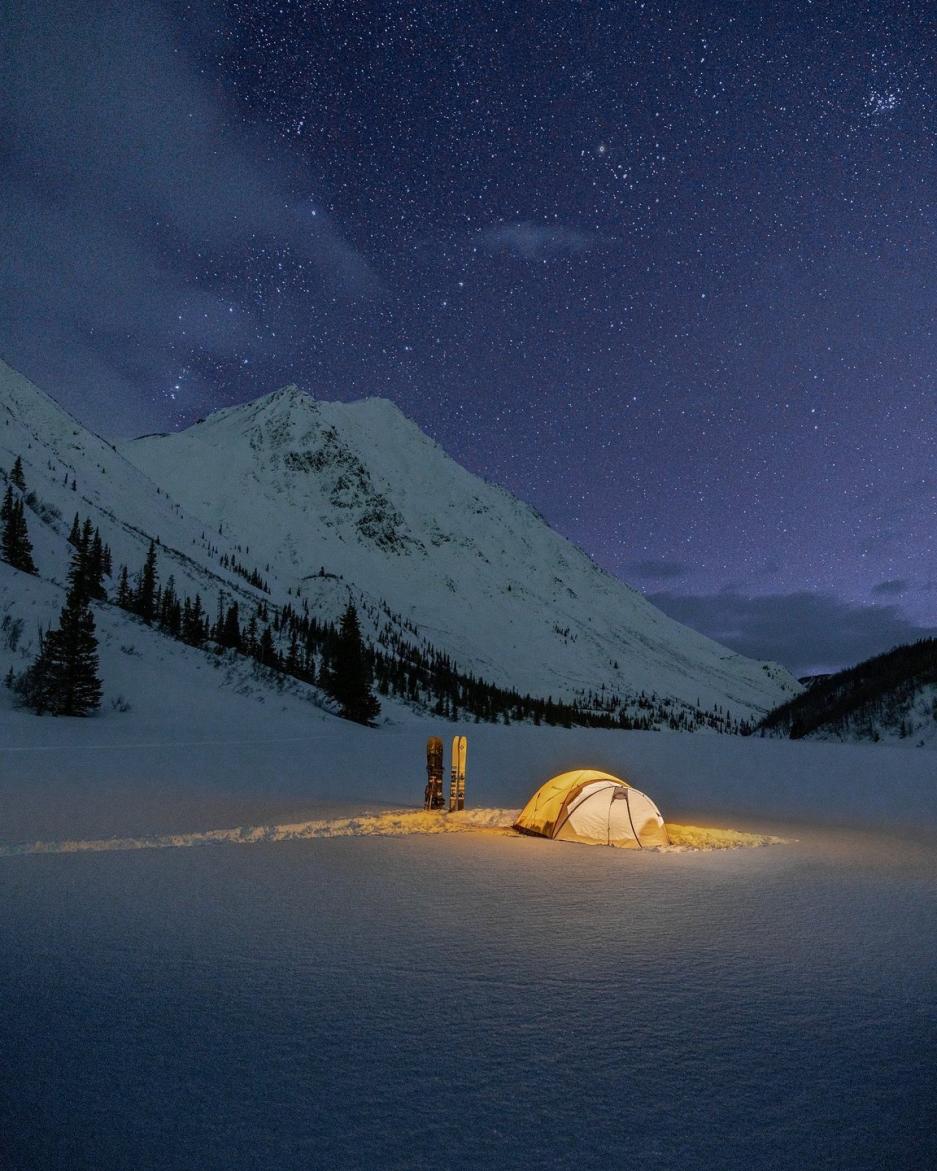
Pack it in, pack it out.
As always, respect the wilderness. No one wants to find a mess when the snow melts. Our leave-no-trace camping ethics apply in winter just as they do all year round. Which means, pack out your garbage and waste. Don’t damage the trees, use deadwood for firewood instead. And always view wildlife from a safe distance.
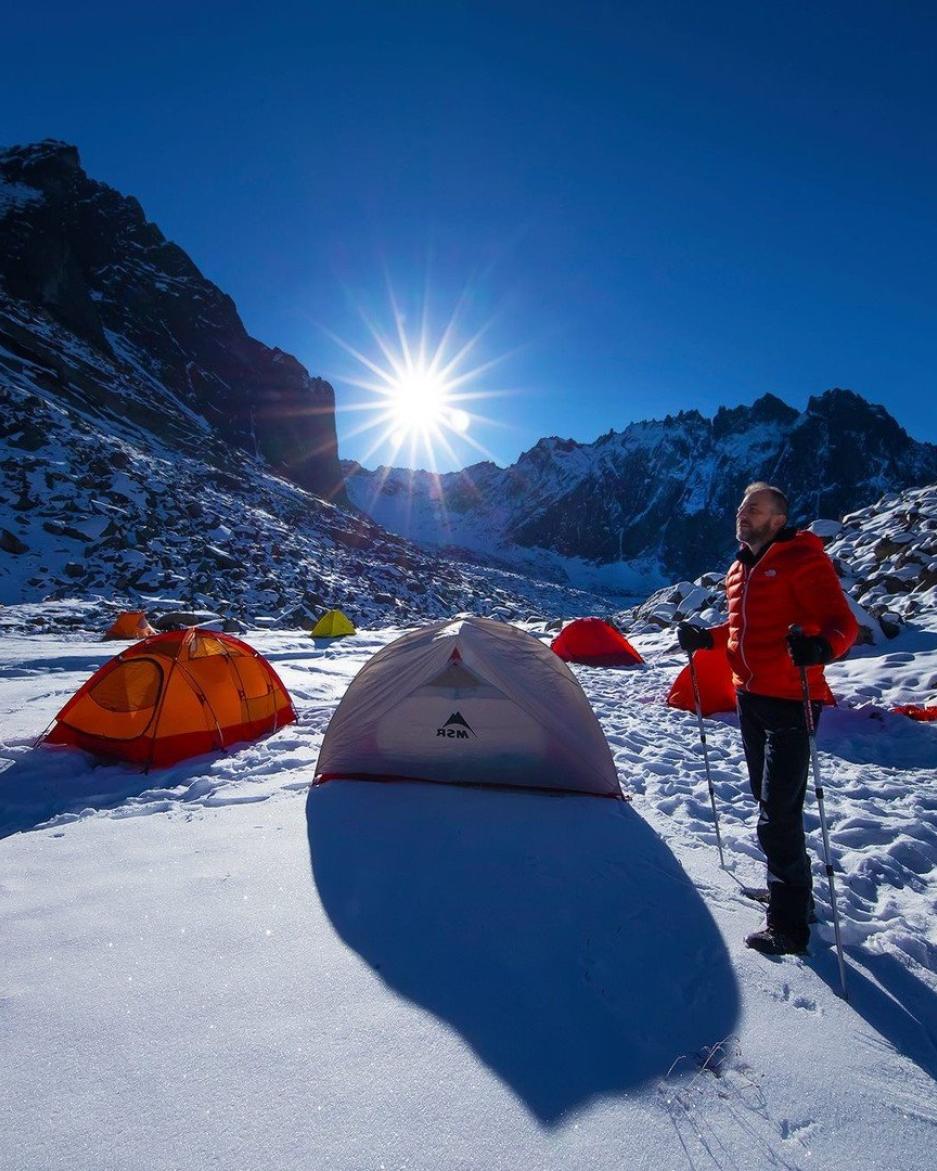
Acknowledging the land
All of the Yukon is the traditional territory of fourteen First Nations, each with various political, cultural and linguistic backgrounds. These First Nations share deep traditional and spiritual connections to their ancestral lands. As you explore Yukon, demonstrate respect for the sacred land that sustains Indigenous ways of life.
